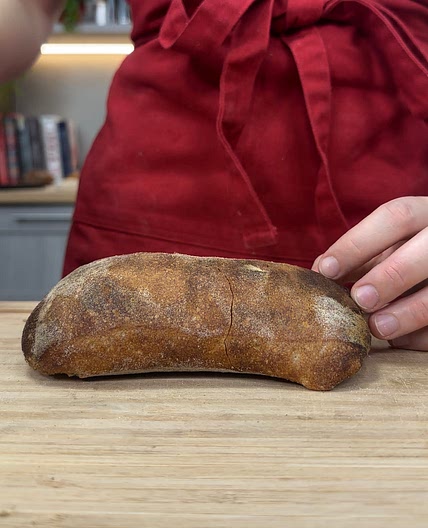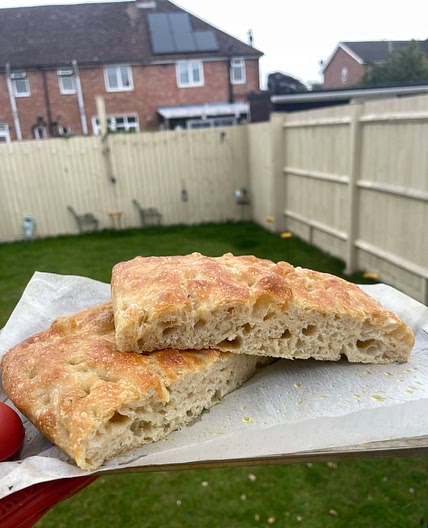By Katya Lyukum
Ciabatta Rolls
7 steps
Cook:15min
Ciabatta was invented only 40 years ago, well, 41. It is known who, where in Italy, and even why it was invented. The story goes that Italian bakers were concerned that French baguettes were beginning to be imported heavily into Italy for sandwiches. By reworking traditional Italian bread recipes, they created Ciabatta (translated as "slipper") and Panino (singular from Panini). By the late 90s, ciabatta and panini were a hit worldwide.
Ciabatta is made from a high-moisture dough made from wheat flour. The dough has a minimum of ingredients. There are large holes in the puffy crumb and a crispy but thin crust on the outside (which gets even crispier after a hot press). However, there are slight variations in different regions of Italy and worldwide. For example, there are recipes made with whole wheat flour, some with the addition of milk and some with a denser crumb. To develop the right textural characteristics and flavor, as well as to prolong the life of the bread, the dough is made with a pre-ferment, which is called poolish, biga, and sponge. For ciabatta, the pre-ferment is made with 100% moisture and is 2/5 of the total dough by volume. Due to prolonged fermentation at low temperatures, this piece of dough from 1 g of yeast develops an army of microorganisms that can create those coveted holes in the crumb and also develops gluten. The final kneading is, therefore, faster.
As is usually the case, there are a million ciabatta recipes floating around the web. The quick version usually involves throwing in a lot of yeast and pouring all the water into all the flour at once. It's also supposed to use high-speed dough mixing with a stand mixer + paddle attachment and sometimes even a food processor. There are super slow recipes for people who are always home and like to meditate in the kitchen. There's slow pre-ferment, slow kneading, and lots of folding. This recipe and the process are somewhere in between — not too fast or slow.
Updated at: Wed, 16 Aug 2023 23:56:58 GMT
Nutrition balance score
Good
Glycemic Index
75
High
Glycemic Load
34
High
Nutrition per serving
Calories247.7 kcal (12%)
Total Fat3.5 g (5%)
Carbs45.3 g (17%)
Sugars0.2 g (0%)
Protein7.5 g (15%)
Sodium394.6 mg (20%)
Fiber1.5 g (5%)
% Daily Values based on a 2,000 calorie diet
Ingredients
8 servings
for poolish/preferment
for dough
Instructions
for poolish/preferment
Step 1
Mix ingredients 24 to 12 hours before using. Ferment in an airtight container on the top shelf of your fridge (the warmest, ~36F) for 24 hours or in a vegetable refrigerator (~45F) for 12 hours. Pre-ferment should triple, so choose the size of container accordingly.
for dough
Step 2
Add water #2 to the preferment and mix until homogenous.
Step 3
Combine liquified preferment, flour #2, and salt in a mixer bowl. With a paddle attachment, stir all ingredients on the lowers speed until combined for about 1 min. Increase the speed by 1 step up and knead for another minute. Increase the speed 1 dial up again and knead at medium speed until the dough come together around the attachment, around 5 min.
Step 4
Add olive oil and mix on medium speed until fully incorporated.
Step 5
Transfer to a lightly oiled container with wet hands and cover with plastic wrap. Ferment 2,5 hours, 2 folds with wet hands.
Step 6

Shape the dough into 8 rolls (~105g each). Proof for 30-45 min at room temperature (70F), covered.
Step 7
Meanwhile, preheat the oven to 425-450 F, with a convection mode, with stone. Bake for 15-20 minutes.
Notes
2 liked
0 disliked
Easy
Go-to












